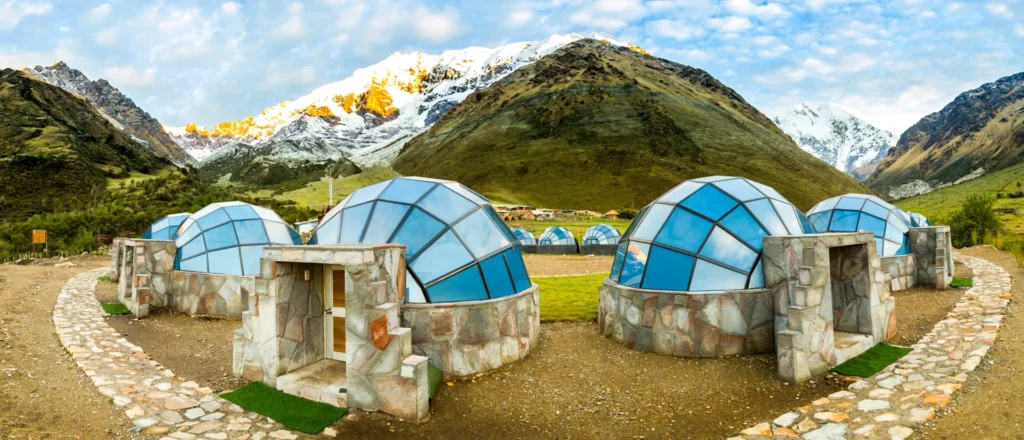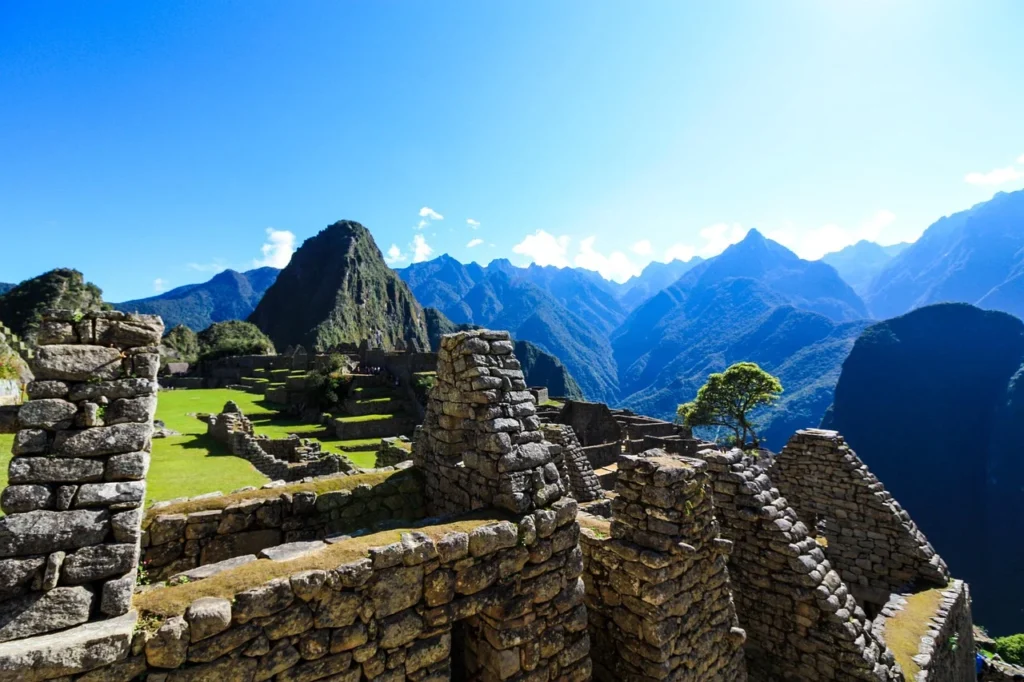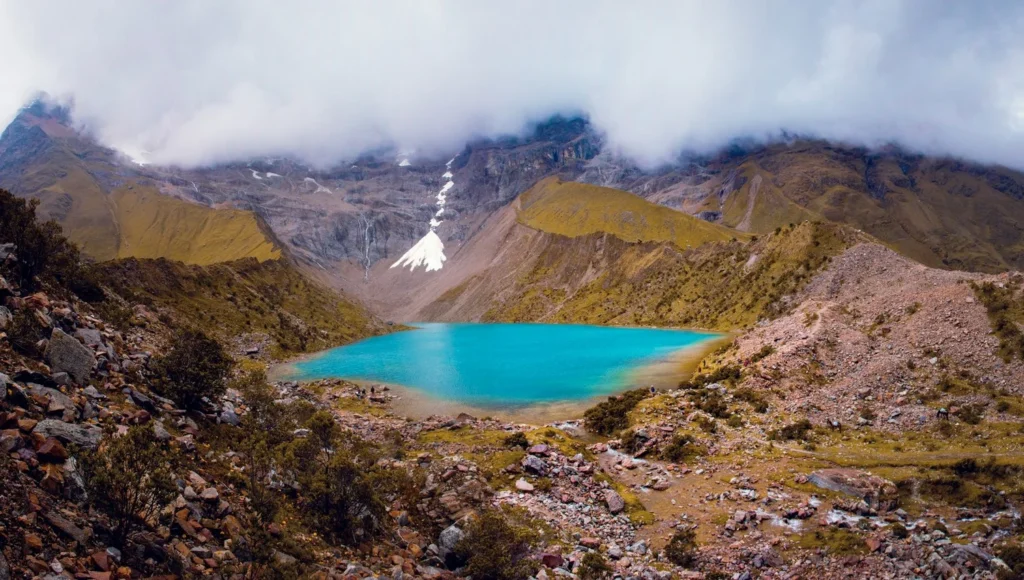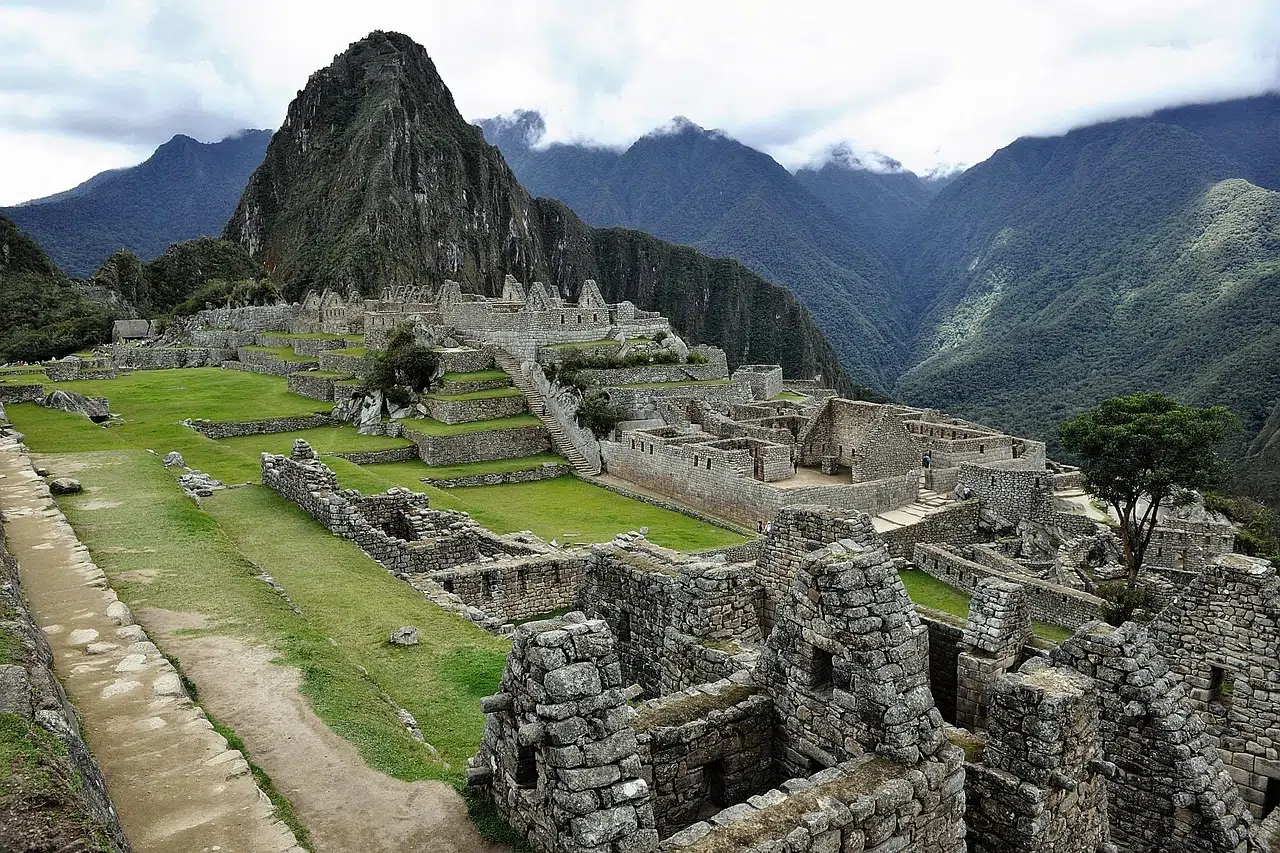After completing both the Inca Trail and Salkantay Trek—and making every rookie mistake in between—I’ve decoded the real challenges of this legendary route. Spoiler: It’s not just the altitude. From knee-crushing descents to mule-dust suffocation, here’s everything no one tells you about Salkantay Trek difficulty—and how to emerge victorious.
The Salkantay Trek is one of the most popular alternative routes to Machu Picchu, known for its stunning landscapes, diverse ecosystems, and challenging terrain. But how difficult is the Salkantay Trek, and is it the right choice for you? In this guide, we’ll break down the Salkantay Trek difficulty level, what makes it challenging, and how to prepare for this unforgettable adventure.
Table of Contents
1. Why Salkantay’s Difficulty is Misunderstood
A. It’s Not Just Altitude (Though That’s Brutal)
- Highest point: Salkantay Pass (4,630m / 15,190ft)—higher than Inca Trail’s Dead Woman’s Pass.
- My shock: Despite acclimatizing in Cusco, I felt like I was breathing through a straw. Coca leaves helped, but nothing prepares you for that thin air.
B. The Deceptive “Alternative” Label
- Myth: “Easier than the Inca Trail.” Reality: 74km over 5 days vs. Inca Trail’s 43km.
- Hidden challenge: Steeper descents destroy knees—I hugged my trekking poles like lifelines on Day 4’s 1,000m drop.

2. Breaking Down the Difficulty Day by Day
Day 1: Soraypampa to Humantay Lake
- Stats: 8.8km, 300m elevation gain.
- Reality check: The “easy warm-up” is a thigh-burning climb to 4,200m. I traded my camera for oxygen halfway up.
Day 2: Salkantay Pass (The Crux)
- Why it’s hell: 3-hour switchback climb at 40% less oxygen.
- Survival tip: Guides whisper “Pole, pole” (slowly, slowly)—racing = guaranteed AMS headaches.
Days 3–4: Jungle Descents & Llactapata
- New pain: Slippery, muddy trails + 30°C heat whiplash after freezing passes.
- Silver lining: Coffee farms! The caffeine boost saved my sanity.
3. Factors That Amplify the Challenge
A. Altitude Sickness Roulette
- Symptoms I ignored: Headache → nausea → vomiting (learned the hard way).
- Pro tip: Diamox works, but start 24hrs early—peeing every 20 mins is better than collapsing.
B. Weather Mood Swings
- Dry season (May–Oct): -10°C nights at Salkantay Pass → scorching jungle afternoons.
- Wet season: Rain turns trails into slip-n-slides (witnessed 3 hikers eat mud).
C. Mule Trains & Dust Apocalypse
- Gross truth: Hundreds of mules = constant dust/manure clouds. My bandana became a biohazard zone.
4. Salkantay vs. Inca Trail: Which is Harder?
| Factor | Salkantay Trek | Inca Trail |
|---|---|---|
| Altitude | 4,630m (higher!) | 4,215m |
| Distance | 74km (longer) | 43km |
| Terrain | Steeper descents + jungle | Stone steps (killer on toes) |
| Crowds | Fewer people, more mules | Permits limit numbers |
Verdict: Salkantay wins for endurance; Inca Trail for technical steps.

5. How to Prepare (Beyond “Get Fit”)
A. Acclimatization Hacks
- 3 days in Cusco minimum—Sacred Valley day trips help.
- Test hike: Sacsayhuamán ruins (3,700m) exposed my weak lungs fast.
B. Gear That Actually Matters
- Non-negotiables:
- Trekking poles (rent in Cusco)—saved my knees on 1,000m descents.
- Sleeping bag (-10°C rating): Night 1 froze my water bottle solid.
C. Training Like a Local
- Inca stairmaster: Find the steepest hill near home, hike with a loaded backpack.
- Downhill focus: Most programs ignore this—my quads screamed for mercy.
6. Guided vs. DIY: A Safety Lifeline
Why I Chose a Guide
- Emergency oxygen: Needed it at the pass when AMS hit.
- Route shortcuts: Our guide bypassed the worst mule traffic.
Budget Trap Warning
- “Too cheap” tours = tiny food portions + filthy tents (saw a group mutiny over rotten chicken).

What Makes the Salkantay Trek Challenging?
The Salkantay Trek is considered a moderate to difficult hike, depending on your fitness level and trekking experience. Here are the key factors that contribute to its difficulty:
- High Altitude: The trek reaches its highest point at the Salkantay Pass (4,630 meters / 15,190 feet), which can cause altitude sickness if you’re not properly acclimatized.
- Steep Ascents and Descents: The trail includes steep climbs, especially on the second day, and long descents that can be tough on your knees.
- Variable Weather: You’ll encounter everything from intense sun to freezing temperatures, rain, and even snow.
- Long Distances: The trek covers approximately 74 kilometers (46 miles) over 4-5 days, with daily hikes ranging from 6 to 8 hours.
- Basic Accommodations: Unlike the Inca Trail, the Salkantay Trek often involves camping in basic conditions, which can be challenging for some travelers.
Salkantay Trek Difficulty: Day-by-Day Breakdown
To give you a better idea of what to expect, here’s a day-by-day breakdown of the trek’s difficulty:
Day 1: Mollepata to Soraypampa
- Distance: 12 km (7.5 miles)
- Difficulty: Moderate
- Terrain: Gradual ascent through valleys and small villages.
- Highlight: Arriving at Soraypampa, the first campsite, with views of the Salkantay Mountain.
Day 2: Soraypampa to Collpapampa
- Distance: 22 km (13.6 miles)
- Difficulty: Challenging
- Terrain: Steep ascent to the Salkantay Pass, followed by a long descent.
- Highlight: Reaching the highest point of the trek at 4,630 meters.
Day 3: Collpapampa to La Playa
- Distance: 16 km (10 miles)
- Difficulty: Moderate
- Terrain: Gradual descent through cloud forests and coffee plantations.
- Highlight: Walking through lush, tropical landscapes.
Day 4: La Playa to Aguas Calientes
- Distance: 16 km (10 miles)
- Difficulty: Easy to moderate
- Terrain: Mostly flat with some uphill sections.
- Highlight: Arriving in Aguas Calientes, the gateway to Machu Picchu.
Day 5: Machu Picchu
- Distance: 5 km (3 miles)
- Difficulty: Easy
- Terrain: Short hike or bus ride to Machu Picchu.
- Highlight: Exploring the iconic Inca citadel.
How to Prepare for the Salkantay Trek Difficulty
Preparation is key to tackling the Salkantay Trek successfully. Here are some essential tips:
- Train in Advance: Focus on cardio, strength training, and hiking with a weighted backpack.
- Acclimatize in Cusco: Spend at least 2-3 days in Cusco (3,399 meters) before starting the trek.
- Pack Smart: Bring layers for variable weather, sturdy hiking boots, and a good sleeping bag.
- Stay Hydrated and Eat Well: Drink plenty of water and eat high-energy foods to maintain your stamina.
- Consider Hiring a Guide: A local guide can help you navigate the trail and manage the trek’s challenges.

Who Should (and Shouldn’t) Do the Salkantay Trek?
The Salkantay Trek is Perfect for:
- Adventure Seekers: If you love challenging hikes and breathtaking scenery, this trek is for you.
- Experienced Hikers: Those with prior trekking experience will find the trail manageable with proper preparation.
- Nature Lovers: The trek takes you through diverse ecosystems, from snow-capped mountains to lush jungles.
The Salkantay Trek Might Not Be Suitable for:
- Beginners: If you’re new to trekking or not in good physical shape, consider a less demanding route like the Inca Trail.
- Those with Health Issues: High altitude and strenuous activity can be risky for people with certain medical conditions.
Frequently Asked Questions About Salkantay Trek Difficulty
1. How hard is the Salkantay Trek compared to the Inca Trail?
The Salkantay Trek is generally considered more challenging due to its higher altitude and longer distances.
2. Can I do the Salkantay Trek without a guide?
Yes, but it’s not recommended for first-timers. A guide can help you navigate and manage the trek’s challenges.
3. What is the hardest day of the Salkantay Trek?
Day 2 is the most challenging, with a steep ascent to the Salkantay Pass and a long descent.
4. How fit do I need to be for the Salkantay Trek?
You should be in good physical condition and able to hike for 6-8 hours daily with a backpack.
Ready to Take on the Salkantay Trek?
Now that you understand the Salkantay Trek difficulty level, it’s time to decide if this adventure is right for you. With proper preparation and the right mindset, the Salkantay Trek can be one of the most rewarding experiences of your life.
📌 Pro Tip: Download our free Salkantay Trek training guide to help you prepare physically and mentally. And if you’re ready to book your trek, check out our exclusive Salkantay Trek packages for the best deals and expert guides.



